WheelPower will host the 33rd edition of the Inter Spinal Unit Games this September
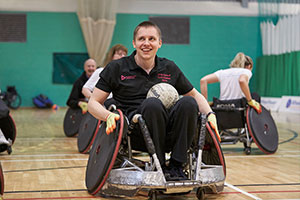
This September the national charity for wheelchair sport, WheelPower will host the 33rd edition of the Inter Spinal Unit Games. After 2 years away, this life changing event returns to Stoke Mandeville Stadium, the birthplace of the Paralympic Movement and in 2022 they will welcome newly injured patients and staff from more than 10 spinal units across the United Kingdom. The Games form an essential part of many spinal patients’ rehabilitation, and this annual event provides a fantastic opportunity to discover sport and enjoy a more active lifestyle. Over 4 exciting days the attendees will get to try over 15 wheelchair sports and learn from qualified coaches from a variety of National Governing Bodies and clubs. In 2022 the sports on offer will include Wheelchair Basketball, Table Tennis, Wheelchair Rugby, Tennis, Canoeing, Wheelchair Racing, Shooting, Hand Cycling and Wheelchair Fencing to name a few. The sports take place across the Stoke Mandeville Stadium site and involve taster sessions and competitions as the week progresses. The Games are sometimes a participant’s first experience outside a hospital environment since their injury, and they provide an important pathway to finding out the tremendous benefits that sport and physical activity can have on disabled people’s lives. The event itself is also very sociable and for those who attend, being able to talk to others of a similar age and injury, to share ideas, tips and advice is a very important aspect of the event, in addition to the sport and activity. One of the participants from 2019 said, “It is wonderful to be here at the Inter Spinal Unit Games and to meet other people my age. When I was in hospital I was surrounded by middle-aged women and men, so I’ve missed the social aspect. Playing sports helps me to strengthen my core muscles, and at the moment all my energy is focused on getting back to walking.” Giselle Moor from the Princess Royal Spinal Cord Injuries Centre, Sheffield. In the past WheelPower has welcomed many future athletes who first discovered their love of sport at the Inter Spinal Unit Games. Current athletes such as wheelchair racer and 2x Paralympic medallist Sammi Kinghorn first sat in a racing chair at this event in 2011. British Rower Benjamin Pritchard took part in the Games in 2017 trying lots of sports before finally choosing rowing on his journey to Tokyo 2020. And Liam McGarry GB Para-Powerlifting Record Holder was spotted by British Weightlifting during the 2018 Games and is now on the Paralympic pathway to Paris 2024. He continues, “When I first heard about the spinal unit games it was something that I was keen to take part in. I wanted to see what the world of sport looked like from a wheelchair and this seemed like a perfect opportunity. The games were fantastic and I was keen to try it all, and during the week competed in the tennis, table tennis, swimming, archery, and the powerlifting. I will always be thankful to WheelPower and the spinal unit games as this is where the amazing journey that I am now on all started.” Emily Weller, Head of Sport at WheelPower, comments: “The Inter Spinal Unit Games provide a brilliant opportunity for individuals with a spinal cord injury to discover activity and sport in a safe and welcoming environment. The Games provide them with the chance to meet with people in a similar situation and share their own personal experiences about life with a spinal cord injury. From the first to the last day you can see how life changing this event is, demonstrating the really transformative work of WheelPower and the difference the charity makes to disabled people’s lives.” Martin McElhatton, WheelPower Chief Executive said: “After a challenging couple of years we are delighted that one of our flagship events will be returning this September. Over 33 years the Inter Spinal Unit Games has given newly paralysed people the opportunity to try a wide range of sports and find out the positive impact it can make to your quality of life. Following my spinal injury, sport played a huge part in my life and here at WheelPower we want to encourage more disabled people to discover the many benefits of playing sport and being active for themselves. We are grateful to all of the coaches, the volunteers and to our fantastic sponsors Coloplast for supporting this year’s event. Following on from the pandemic we understand that the Inter Spinal Unit Games are more important than ever before, and we look forward to supporting all the participants at the Games this year.” For more information about the Games please visit https://www.wheelpower.org.uk/sport-events/inter-spinal-unit-games-2022
MOTORHOMES MAY BE ACCESSIBLE FOR PEOPLE WITH DISABILITIES
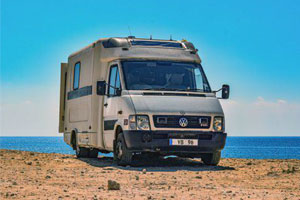
There are many different types of motorhomes on the market, and although not all of them may be accessible for people with disabilities, there are a number of models that can accommodate various needs. If you’re looking for a vehicle that provides accessible transportation and comfortable accommodations, a motorhome may be the perfect option for you. In this post, we’ll take a look at some of the most accessible motorhomes on the market and discuss what to consider when making your purchase. Motorhomes For People With Disabilities Require Wheelchair Ramps Many people with disabilities rely on motorhomes to help them live independently. These homes on wheels provide a high level of mobility, allowing their occupants to travel wherever they please. However, motorhomes can pose some challenges for those with disabilities, particularly when it comes to getting in and out of the vehicle. When travelling as a family on 6 berth motorhomes with a family member on a wheelchair, a wheelchair ramp can ensure ease of boarding and alighting. That’s why many motorhomes for people with disabilities are outfitted with wheelchair ramps. These ramps make it possible for those who use wheelchairs or other mobility devices to safely enter and exit the motorhome. In addition, wheelchair ramps can also be used to transport equipment such as power chairs or scooters. As a result, they play an essential role in making motorhomes accessible for all. Motorhomes For People With Disabilities Require Accessible Bathrooms Accessible bathrooms are another must-have for anyone who plans on living in a motorhome full time. If you don’t have easy access to the toilet, you will quickly become frustrated. Motorhomes are a great way for people with disabilities to enjoy the freedom of the open road. However, due to their limited size, motorhomes can often be difficult for people with disabilities to maneuver. This is why many motorhome manufacturers offer models with accessible bathrooms. These bathrooms typically feature wider doorways and larger, ADA-compliant stalls. In addition, accessible bathrooms may also have grab bars and other features to make them easier to use for people with limited mobility. While accessible bathrooms may not be required by law, they can make a big difference in the comfort and independence of people with disabilities. As a result, many people with disabilities choose to purchase motorhomes that offer this important feature. Motorhomes For People With Disabilities Require Wheelchair Raiser Wheelchair raisers can be a life saver if you plan on using your motorhome as a permanent residence. They will raise your wheelchair up to the same level as the rest of the RV, making life much easier. Wheelchair raisers are an important part of many motorhomes for people with disabilities. While motorhomes offer a great deal of freedom and flexibility, they can also be difficult to maneuver if you have limited mobility. A wheelchair raiser helps to overcome this challenge by elevating the wheelchair so that it is level with the motorhome floor. This makes it much easier to get in and out of the vehicle, and it also allows you to move around inside the motorhome more easily. In addition, a wheelchair raiser can also be used to raise other heavy items, such as coolers or luggage, making it a versatile tool for people with disabilities. Motorhomes For People With Disabilities Require Folding Beds Folding beds may not be necessary for everyone, but they can be incredibly useful if you need more space during the day or want to entertain guests overnight. Just make sure that you choose a bed that is easy to fold up and down so you don’t get stuck trying to figure it out in the middle of the night. Folding beds are an important part of many motorhomes, but they are particularly important for those with disabilities. Folding beds provide a safe and comfortable place to sleep, but they can also be used as a seat during the day. This is especially important for someone who uses a wheelchair, as it provides a place to rest when they are not able to sit in their chair. Folding beds also make it easier to get in and out of the motorhome, as they can be stored away during the day. For someone with reduced mobility, this can be a real advantage. In addition, folding beds can be used to carry cargo or extra passengers, making them a vital part of any motorhome. Motorhomes For People With Disabilities Require Grab Bars Grab bars are another important safety feature that should be included in any motorhome designed for people with disabilities. These bars will help keep you steady when getting in and out of the vehicle. There are a number of reasons why motorhomes for people with disabilities require grab bars. First, grab bars provide additional support when entering and exiting the vehicle. This is especially important for those with limited mobility, as it can help to prevent falls. Second, grab bars can be used to help steady oneself when standing or moving around inside the motorhome. This is especially important for those with balance issues, as it can help to prevent accidents. Third, grab bars can be used to help pull oneself up when sitting or lying down. This is especially important for those with limited strength or mobility, as it can help to prevent injuries. Grab bars are an essential safety feature for motorhomes for people with disabilities, as they provide support and stability when entering and moving around inside the vehicle. In Summary Motorhomes for people with disabilities come in a variety of shapes and sizes, but one thing they all have in common is that they require support features to guarantee safety and convince of a person living with disability when using the motorhome.
Relaunch transforms Motability Scheme’s website, creating easier access to worry-free motoring
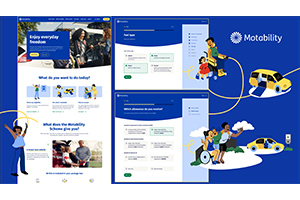
The Motability Schemes website Motability.co.uk is now more accessible, simpler to navigate, and features a host of new tools, such as a product selection questionnaire and an updated and enriched electric car hub to support customers who are considering the move to electric. Motability Operations partnered with integrated marketing communications agency, Wunderman Thompson, to design and implement the website refresh. The Motability Scheme’s new website features a new homepage which clearly signposts users to the right information from the moment they visit the site. The illustrations come from creative Jess Oddi, who has personal experience of living with a disability. The website features a new warmer colour palette and the design has gone through extensive testing following best practice around accessibility ensuring it is as practical and useful to as many people as possible. Lisa Thomas, CMO at Motability Operations, said: “Finding the right information online is an important step in the journey towards becoming a Motability Scheme customer, and for existing customers to stay up to date with the support on offer. Our new website is designed to help discover the comprehensive package that is available through the Motability Scheme, and what the options are, in a way that is easy to understand and access. The website’s new designs and tools make it simple to find what you are looking for, all presented in a refreshing, clear manner. We are proud that our website is now better equipped to deliver worry-free mobility.” Conrad Rasmussen, head of experience at Wunderman Thompson, said: “Motability Operations’ customers describe the organisation as ‘superheroes’ – that’s the kind of impact they can have. The website’s new design brings this to life and offers a flexible, intelligent and connected platform that empowers people through the right journey, with the right support, at the right time.” Information on Motability.co.uk is now split out into different pages, making it easier to digest. Pages are dedicated to eligibility, available vehicles, Scheme news, electric vehicles, and much more, and quick to navigate via clear illustrations. New product selection tools provide personalised service and support for customers looking for a vehicle or package that fits their needs. Users only need to answer a few questions about their requirements and lifestyle, and the website will swiftly guide them to the most suitable options. Improved website navigation and site search allows customers to access the information they are looking for. A simplified navigation menu also helps users find information, and when searching, typos are corrected, and relevant results pages suggested. For more information on leasing a car, scooter or powered wheelchair through the Motability Scheme, visit motability.co.uk or call 0800 953 7000.
How to support your child if they have a learning difficulty

Research conducted by Oxford Home Schooling revealed that while overseeing their children’s learning during lockdown, many parents spotted potential signs of a learning difficulty. Nearly half (47%) identified symptoms of dyslexia (difficulty reading, writing and spelling), whilst more than one in four (29%) observed possible indicators of dysgraphia (impaired handwriting or spelling). To help parents who now think their child may have a learning difficulty, Greg Smith, Head of Operations at Oxford Home Schooling, has put together a guide on how best to support your child and what your next steps should be. 1 Get your child diagnosed If your child’s difficulties are having a significant impact on their learning, it’s a good idea to have them tested for a condition and diagnosed. A diagnosis can open the door for your child to receive appropriate learning support in school. This includes allowing them extra time in exams and being supported by a teaching assistant, so it’s a good idea to look into this as early as possible. If you’ve observed signs that your child may have a learning difficulty, you should speak to your GP, who can either make the diagnosis themselves, or refer the child for the appropriate tests. 2. Speak to your GP Once a child is diagnosed with a learning difficulty, you should consult your GP. They will then be able to recommend and refer you to an appropriate specialist for support1. Specialists can include speech and language therapists, educational and clinical psychologists and paediatricians, among others. 3. Make the school aware Once you have an idea of the areas where your child is struggling, you will need to make their school and teachers aware of the situation. This will allow the school to put extra support in place should your child require it. They will need time to consider how the condition might affect the child’s learning and work out how best to adapt their teaching. 4. Talk to others Many parents find it difficult to process the diagnosis of a learning difficulty and it can be a challenge to adapt to your child’s new needs. Don’t be afraid to seek out the support of other parents who have experienced similar situations. There are many support groups and forums out there for advice, and you and your child can even build new friendships. 5. Support your child The important thing to remember is that you need to support your child, whether this is with their learning, or any other aspects of life that they struggle with. Being diagnosed with a learning difficulty is by no means the end of the world and children with such conditions go on to enjoy rich and fulfilling lives. You will need to be patient, and it may be challenging at times, but with the correct support system in place your child will be fine. For information on the benefits of homeschooling for children with learning disabilities and special educational needs, head to this page: https://www.oxfordhomeschooling.co.uk/special-situations/
Continence Care Roadshow 2022

This year to support World Continence Week, Blueleaf has partnered with Ontex to create the Continence Care Roadshow – which will take us across the UK in our very own ice cream van. World Continence Week is a health campaign run every year by WFIPP (World Federation of Incontinence and Pelvic Problems) to raise awareness of continence related issues, and this year, the awareness campaign is running from Monday 20th June – Sunday 26th June. In an NHS England report titled ‘Excellence in Continence Care’ published in 2018, it was estimated that more than 50% of care home residents have urinary incontinence. With such a high number of residents living with a requirement for continence care, it is essential that care homes are aware of the best solutions available to help maintain dignity and independence where possible. That is why, in line with World Continence Week, Blueleaf have teamed up with Ontex to embark on a five-day roadshow, touring the UK to visit a variety of care homes in our very own ice cream van. Dedicated to the sector since 1987, Blueleaf help care homes deliver better operational outcomes by connecting janitorial and medical products, equipment, furniture and design with best-practice knowledge, insight, training and procedures. Driving across the UK, we will be visiting various care homes, to not only serve staff and residents the perfect treat for a summer’s day, but also share our combined deep sector expertise and boost awareness of all the key solutions that help to support continence care. Joining the roadshow will be an Ontex Nurse Advisor, who together with the Blueleaf team, will be on hand to discuss the other ways we can support care homes, with education and training for staff, as well as offering advice on how continence care and any associated costs can be effectively managed in every care home. There are many different solutions available that have been designed to make continence care as comfortable as possible for the resident, and as functional as possible for care home employees. But as we all know, every resident is unique and this means that more often than not, they will not all require the same continence care solution. Navigating the vast range of continence care products can be confusing, which is why on our roadshow, we will be talking about all the different products that are available and the situations for which they are most appropriate. Choosing the right products for your residents is not only essential for making sure that your customers are happy and comfortable, but the right product can help you to work smarter and be more efficient – which we know is crucial when time is so valuable. At the same time, Ontex has announced it is launching Orizon – a new, cutting edge incontinence care solution for improved management in care homes, which will fully launch in October 2022 following a trial in a number of care homes. Keep your eyes peeled for more information. If you see us on road, take a photo (if safe to do so) and tag us on LinkedIn – @Blueleaf and @Ontex – for your chance to win a £100 Love2Shop voucher!
Your helpful guide to disability inclusion in the workplace – 2022
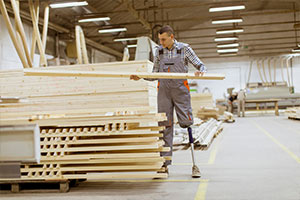
In an increasingly digital and remote working environment, a leading employee benefits company has designed a guide to help employers focus on disability inclusion. Ben – an all-in-one platform for any company to personalise benefits and rewards – has published an online guide that explores the key aspects of disability in the workplace in depth. By making disability inclusion a priority, businesses can help drive motivation, engagement, and talent retention at work. About 19% of the working age population are registered as having a disability so employers must consider inclusion or they could be accused of discrimination under the Equality Act. Having policies and procedures in place to ensure inclusivity, even before you’ve employed anyone who has a disability, will benefit you and future candidates in the long-run, as you’ll have a better idea of how you can accommodate them. Disability Inclusion in the workplace Creating a more inclusive culture at work It takes time and commitment to create a more inclusive workplace culture, but it’s worth it in order to ensure all employees are comfortable, confident, and happy at work. It will also benefit your company in the long-run. Employee retention is likely to be higher if your team is happy and supported. Identify existing unconscious bias Unconscious bias refers to stereotypes or “prejudice in favour of or against one thing, person, or group compared with another” that someone can form outside of their own awareness. We all have unconscious bias. Humans like to organise the world by placing everything into categories and this can lead to bias, even if it differs completely from your actual beliefs. However, if you become more aware of it, you can stop it from having an influence over your behaviour. How to avoid unconscious bias at work It would be wrong to become a financial crux to lean on, but finding a middle ground as a helping hand in a crisis is something totally different. Make sure to let your team know that the company will do whatever they can to help if unforeseen circumstances leave them with major money troubles. The specifics of this help can be discussed on an individual basis if such a reality ever presents itself. 1.Question assumptions, talk about unconscious bias with your employees and co-workers, and make sure they understand what it is and why they need to avoid it. 2.Arrange unconscious bias training for your employees. 3.Advertise job roles in multiple places, so they’re more likely to be seen by a diverse group of candidates. 4.Omit some personal details off of applications, such as names, which can reveal characteristics such as gender and ethnicity. 5.Have more than one person assess CVs, so you have a range of opinions 6.Carry out initial interviews on the phone, so the interviewer(s) cannot make decisions based on physical appearance. 7.Keep a written record of why decisions are made. Change the language you use Language evolves over time. Previous terminology may not be considered inclusive now, so it’s worth understanding why it’s fallen out of favour, as well as checking what is acceptable today. It’s also important to note that there’s never going to be a universal agreement on what’s right and what’s not. The disabled community may have differing views on some terms. Always ask a disabled employee what they prefer, and be willing to update your vocabulary as language shifts. Doing so will help to create a more welcoming working environment. Disabled person / person with a disability There is some debate regarding which term is better: disabled person, or person with a disability. There are arguments for and against both terms. Some people would prefer to refer to themselves as “disabled”, as they are disabled by the world when accessibility has not been thoroughly considered. Others would prefer “person with a disability”, as this implies they are an individual who happens to have a medical condition. You may also have come across the term “differently abled”, but some people find this patronising as it’s a euphemism. The most important thing is to ask someone what terminology they’d prefer, and then respect that choice and educate the rest of the company to do the same. Collective language “Disabled people” or “people with disabilities” are the preferred terms for a group of disabled people, rather than referring to them as a collective (“the disabled”). This is because the word “disabled” is an adjective, not a word for a group. Wheelchair user (s) “Wheelchair user(s)” is preferred over “wheelchair-bound”, which implies that the person can’t leave their wheelchair. This is inaccurate, as anyone who uses a wheelchair will leave it to do things like use the toilet or go to bed. Some wheelchair users may only need to use it some of the time, and may choose to walk if they are able to. The word “bound” also has negative connotations of being trapped, when in fact a wheelchair is valuable and allows the user to live their life. Positive vs. negative language Avoid patronising comments (“You’re doing so well”, “You’re a hero”, “You’re an inspiration”), or negative language (“What’s wrong with you?” “They suffer from XYZ”). Both could be considered rude and unnecessary, and they may suggest victimhood. The government has some additional guidelines about which language to avoid. Recruitment Job posts Consider using other methods in addition to your usual recruitment sites or agencies. Reach out to non-profit organisations, employment programs for people with disabilities, and local universities or colleges, or hire a recruitment agency that supports people with disabilities. This will widen the net when you’re looking for new employees. Information in your job advertisement should include benefits that appeal to marginalised groups. For example, flexible working hours and being able to work from home will appeal to individuals with disabilities, as well as people with young families or caring responsibilities. You could also add a statement encouraging individuals with disabilities to apply, and note that reasonable adjustments can be made.
Introducing Bealies Adaptive Wear
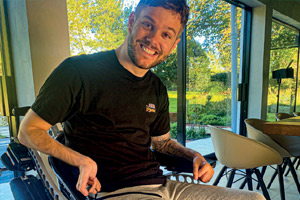
In January 2016, our lives changed forever. One Saturday afternoon whilst out with my son Emile, he suffered a spinal cord stroke, just like that, with no warning! The spinal stroke left him paralysed from the chest down. Emile spent time in the Royal Manchester Children’s Hospital for 3 months. Due to his age, Emile wasn’t able to spend time as an inpatient at The Northwest regional spinal unit, however he spent some time as a day patient for rehab. I was amazed at how well Emile coped with this traumatic event; his resilience was astounding. Emile has no bladder or bowel function, and we must self-catheterise to empty his bladder. It soon became clear once we got into our daily routine that clothes do not fit properly whilst sat in the wheelchair. More importantly, the comfortable joggers that Emile likes to wear do not provide easy access to catheterise. The Idea! I undertook research and spoke to a range of people including wheelchair users, carers, physiotherapists, and Occupational Therapists to find out the issues they faced when getting dressed or supporting someone getting dressed. With this research, and my own experience with Emile, I approached The Fashion Institute at Manchester Metropolitan University. They had been researching, with the Stroke Association, the difficulties stroke survivors face when trying to find suitable clothes when they return to work. Students Rebecca and Melissa Everett were excited by my idea of fly front opening joggers, and they wanted to make a prototype. The product; Adaptive joggers/trousers Bespoke joggers/trousers with a unique opening to enable comfortable dressing and catheterising. They are higher at the back to avoid sagging whilst sitting and transferring to ensure everything is covered! I have been working with a small focus group of people, who range from having a spinal cord injury in adulthood to people who were born with cerebral palsy. We identified that there is a difference in muscle mass in the legs for people who cannot weight bear or have been spinal injured for a long time and lost muscle mass over the years. Therefore, we redesigned the joggers to have a slim fit leg (which is fashionable presently) and we will also have a regular fit for people with more muscle mass on their legs, to ensure a better fit for different disabilities and all shapes and sizes. A small run of the joggers has been made and the online store opened in September this year. I will also be selling the joggers from my unit at Broadstone Mill Shopping Outlet, Broadstone Road, Reddish Stockport, SK5 7DL. We opened on Friday 3rd December 2021 to coincide with the ‘International Day of Persons with disability. What people say about their adaptive wear Having been a paraplegic for over 35 years, I am familiar with the search for comfortable clothing that looks and feels great but is practical for the kind of user that sits down all day. The Bealies Joggers are the holy grail of leisure wear for wheelchair users, particularly if you self-catheterise. With the offset zip it is possible to catheterise yourself easily, without fuss. With that is the quality of materials and construction of these pants. The material used is soft and durable, the zip is large and easy to grip, the seat is manufactured with a higher back to keep you covered. There is a phone on the front/side to keep your mobile phone where you need it. The Bealies Joggers have been well thought out, well designed and well manufactured and you should buy yourself some today. Phil, Cheshire I wore them on Tuesday for teaching PE. They were good as they did not fall like other pants. Plus, the zip bit at the side helped when catheterising. The leg part fitted well- especially when transferring. Plus, I was able to pull them up while in the chair. Overall, I loved them. If I were to buy a pair, I would get the next size down. Andrew, Lancs Me! I am a 56-year-old mother of three children, Theo, 27, Emile, 20, and Esther,18. We live in Stockport, Cheshire. I have taken early retirement from my career as a mental health social worker and felt ready for a new challenge. I believe in the product and feel that there is a gap in the market for casual wear for wheelchair users which is fashionable as well as functionable. Esther’s nickname for Emile is Bealie, as it rhymes Emile, so I decided to name the business Bealies adaptivewear. Esther calls him fart head now, luckily we had named the business otherwise we might have been called ‘Fart Head adaptivewear ! I am passionate about supporting manufacturing in the UK, my mother was a home machinist when clothing manufacturing in the UK was strong, therefor I have produced the joggers in the Midlands. Adaptive clothing market The UK high street does not yet reflect this shift. Unlike the US, where a handful of mainstream stores with adaptive lines. UK retailers remain slow to enter the market. Designers must address the unmet demand for disability-friendly workwear and occasion wear as identified in the project with Manchester Metropolitan University. Marks and Spencer are selling an easy dressing range for children in stores and online and as mentioned above, Tommy Hilfiger has had some success with its inclusive, yet expensive, range of clothes each season. There is a clear market for my clothes and my business has the potential to grow. References The future for Bealies Adaptive Wear
5 tips to manage chronic pain
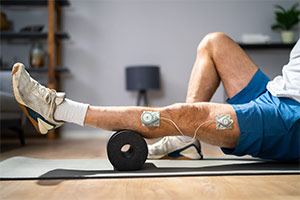
Chronic pain is hard. Especially when it’s one of several conditions or symptoms you’re juggling through the day. You aren’t alone – up to 50% of the UK adult population experience chronic pain, and according to UK government data if you’re living with a disability you’re twice as likely to be affected by long term pain.,, Dr. Ashish Shetty is a Consultant in Pain Medicine at the National Hospital for Neurology and Neurosurgery, University College London Hospitals and NuroKor’s Chief Medical Officer. He explains why living with pain can be so difficult and how if you are one of the 28 million people in the UK affected, you can stop pain ruining your day. Despite being common, chronic pain is very personal – it affects everyone differently. Whilst some have constant pain, others are prone to flare-ups. Both drastically affect how you feel, both physically and mentally. It can impact your ability to work and interfere with the activities of daily living. Finding a solution to manage the pain isn’t always plain sailing either and many people feel that long-term, prescription pain relief is their only option, which can present problems of its own. The good news is, there are other effective and sustainable solutions that are worth looking into; in the same way that everyone’s pain is very individual, so are the options. Although there is no magic fix-all solution, it’s often a combination that makes the most difference – it’s all about finding what works for you. If you experience pain, here are five different things you can explore and try incorporating into your daily pain management strategy. When psychological support for pain management is suggested it can sometimes feel as if your pain and your experience aren’t being recognised. Pain is multifaceted and requires a multidisciplinary approach . It is important to remember that suggestion of psychological support is not to suggest that the source of your pain is psychological – in fact, it’s the opposite. Chronic pain has been shown to affect mental health. Being in pain can feel hopeless and a heavy burden to bear, so psychological support can go a long way to help you manage your pain symptoms. Options can include counselling, cognitive behavioural therapy, relaxation or even medication. For some people, their pain and flare-ups follow clear patterns, but for others it can feel like pain onsets for no apparent rhyme or reason – either way it can be incredibly disruptive to life. Maintaining a pain diary might help in identifying the triggers that influence the timings of flare- ups or even the severity of pain. Triggers can be as easy to identify as heavy exercise or disrupted sleep, to simple day-to-day activities like cooking, cleaning, watching TV, driving. Other triggers include stress, food, allergies, hormones or changes in the environment. By identifying how potential triggers are influencing your pain, rather than whether or not it’s causing it, can help give insight into the best way to manage on a day-to-day and flare-up-to-flare-up basis. It could be that some of these triggers could cause flare-ups, but are not necessarily indicative of the source of the pain. You can also use this information to support conversations with your care teams, to help identify the best approach and care for you and pace your daily activity levels 3) Diet and Lifestyle changes Understanding what makes your pain worse, or what makes your pain better, is helpful to understand and create a manageable plan for how to live day-to-day, and help to avoid flare-ups. A balanced diet and a healthy lifestyle is essential for the wellbeing of every individual. This becomes more important when one has chronic conditions. 4) Exercise and Hydrotherapy Exercise is not always an option when you’re experiencing chronic pain. However, gentle exercise, within the parameters of what is comfortable and doesn’t exacerbate symptoms can help to release endorphins and relax the body. It doesn’t need to be strenuous and you don’t even need to break a sweat – something as simple as chair yoga, seated pilates, or a gentle stretching routine could help get your body loving a little. Any exercise that doesn’t exacerbate the problem and helps maintain a range of motion is a net positive. For lots of people water can feel calming – sometimes even just being near water can help them to relax. Physiologically, being able to get into the water is even better as it can not only ease the pressure on your body but can help to soothe your skin and muscles. Simply floating in water will get your body moving in a safe, comfortable and pain-free way. It has also been proved to increase endorphins and aid in relaxation, for the treatment of everything from chronic pain to PTSD., 5) Bioelectronics Whilst various pain devices have been around for a while and have some limited use, personalised, targeted technology like NuroKor Lifetech that uses peripheral nerve stimulation and microcurrent stimulation technologies, are being increasingly recommended and endorsed by healthcare professionals and clinical experts as an effective way of managing pain and recovery from injury. The use of electrical stimuli to manage pain is probably the oldest treatment known to humans. The Greeks used torpedo fish to deliver electrical current to treat headaches in 47 AD. Microcurrent uses electrical currents that are so small that you barely feel them. The current is utilized by your body’s cells to support recovery and benefit joints and soft tissues such as the muscles, tendons and ligaments. External stimulation NuroKor devices use electricity in a controlled fashion using special algorithms to interrupt the pain signals traveling to the brain via the nervous system. These handheld devices are safe to use on multiple parts of the body, and have numerous programmes, tailored specifically to the type of pain and location, to provide instant and enduring pain relief. In a recent patient survey, 86% reported pain relief for at least six hours, with some reporting sustained relief one week and
Baluji Shrivastav OBE Uses Inspiring Tale To Encourage Musicians All Over The World

Blinded at only 8 months, Baluji Shrivastav OBE has spent nearly all of his life challenging the stereotypes around the blind as one of the industry’s leading and most respected musicians. An Indian multi-instrumentalist, Baluji established the Baluji Music Foundation in 2008 – an organisation which aims to support visually impaired musicians which then in turn founded The Inner Vision Orchestra. Baluji Shrivastav OBE is one of the greatest instrumentalists India has produced excelling in Sitar, Surbahar, Dilruba, Pakhavaj and Tabla. The outstanding characteristic of Baluji’s musical career is his consistent versatility. His ability to concentrate on sound as his primary mode of interaction with the world has enriched his musicality and his courageous attitude to life is reflected in his approach to music. Firmly established in the Hindustani classical tradition, he effortlessly delights in exploring music in all of its forms, as he shared when entertaining the world at the closing ceremony of 2012 Paralympic Games with Chris Martin and Coldplay. He composes for film, dance, theatre and original works for Western orchestra and Indian ensembles. He is Sitarist to the stars”- Evening Standard – recording with Massive Attack, Madness, Doves, Amorphous Androgynous, and performing with great artists such as Stevie Wonder He also has his own Jazz ensemble Jazz Orient/Re-Orient and has recorded many albums which has been one of the vital areas that inspired and influenced him to continue to want to make change for others. Through his success, representation has always remained important to Baluji, and so in the year 2008, he created The Baluji Music Foundation which is a charity based in London focussing on the understanding and enjoyment of music and the performing arts from Indian Sub-Continent in all its traditional and evolving forms. Traditionally accepting participants who are disabled within the music industry, the foundation has now founded The Inner Vision Orchestra of Blind and Visually impaired musicians which was founded in 2012. The Inner Vision Orchestra is the world’s only professional ensemble of blind and partially sighted musicians, established to challenge the barriers Baluji faced as a child. Presently the orchestra has 18 members and counting with branches in the UK and India. The orchestra reached its impressive international stage when members of the group, alongside Baluji, performed at the Closing Ceremony of the Paralympic Games at the London 2012 games, which was an incredibly monumental moment within their journey. The founding principles of the Baluji Music Foundation are to advance access to artistic experiences for disabled people, to advance experience and appreciation of the arts through cross-cultural artistic activities for people of all backgrounds. They also aim to advance the public’s education in traditional, classical, and contemporary Indian music and to advance racial harmony, community development, and the promotion of diversity for people of all backgrounds and abilities through involvement in artistic activities. Baluji has two exciting shows on the horizon, with April 2nd seeing him perform alongside world-renowned opera singer Patricia Rozario OBE for a night of Goanese music while later on May 7th Baluji takes his Inner Vision Orchestra to Bradford-on-Avon for an indelible performance of spectacular artistry and passion. www.quitegreat.co.uk